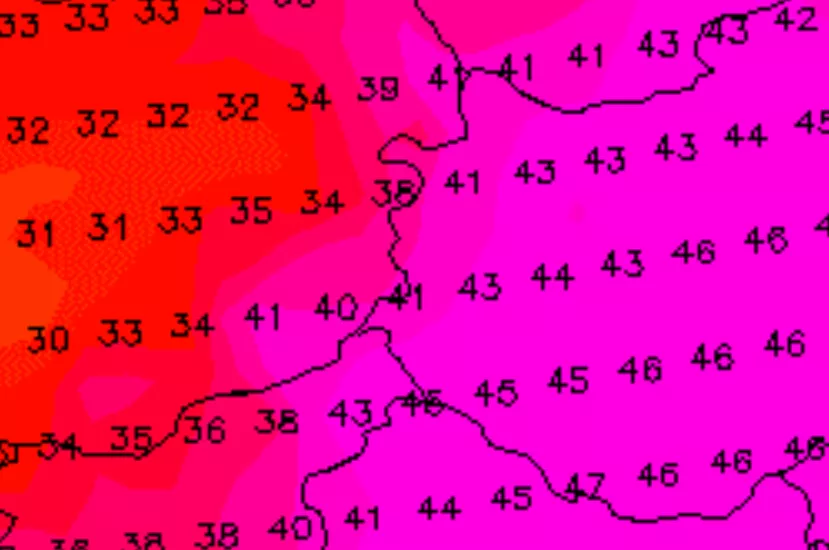
New high-resolution GFS model outputs for late July 2025 are drawing strong attention across the meteorological community, projecting exceptional maximum temperatures of up to +47°C in Hungary and +43°C in Slovakia around July 23rd. While such values are not yet confirmed, their recurrence across multiple runs raises concern for a historic heat event in Central Europe.
Aggressive Heat Signal Over the Carpathian Basin
The GFS (Global Forecast System), a leading numerical weather prediction model, has repeatedly shown a heat dome building over the Carpathian Basin, with thermal ridging and near-surface temperatures forecasting potential all-time records:
- Hungary: Simulated 47°C in the Alföld (Great Hungarian Plain), especially around Szeged, Kecskemét, and Debrecen
- Slovakia: Up to 43°C, particularly in the southern lowlands from Nové Zámky to Rimavská Sobota, even Nitra and Košice regions
- Extreme 2m temperature anomalies (+10°C above normal) and surface thickness charts support the heat dome pattern
Comparison With Historical Records
These values would obliterate national records if realized:
- Hungary: Current national record is 41.9°C (Kiskunhalas, 2007)
- Slovakia: Official highest temperature is 40.3°C (Hurbanovo, 2007)
- +47°C in Hungary would match or exceed some of the highest temperatures ever recorded in Europe
- +43°C in Slovakia would be unprecedented and significantly above elevation-adjusted thresholds
Uncertainty & Model Volatility
While the deterministic GFS runs are highly aggressive, ensemble models (GEFS, ECMWF) show variability. Key uncertainties include:
- Soil moisture: Dry conditions enhance heating, and current drought across the Pannonian region supports feedback loops
- Cloud cover: Could suppress peak heat in some areas
- Persistence of high-pressure ridge: If stable, could prolong heatwave and increase intensity
- Convective outbreaks: May limit extreme heating, especially in mountainous or elevated regions
Still, the signal for extreme heat remains strong and consistent across multiple outputs, justifying heightened alertness.
Potential Impacts If Forecast Materializes
If these projections are even partially accurate, consequences could include:
- Severe heat stress for the population, especially the elderly and children
- Power grid strain and blackouts due to cooling demand
- Water scarcity and drought intensification
- Crop failure in maize, sunflower, and vineyards across southern Slovakia and Hungary
- Wildfire outbreaks, particularly in dry steppe and grassland zones
Governments, emergency services, and meteorological institutes in the region should begin monitoring and scenario planning even at this early stage.



























